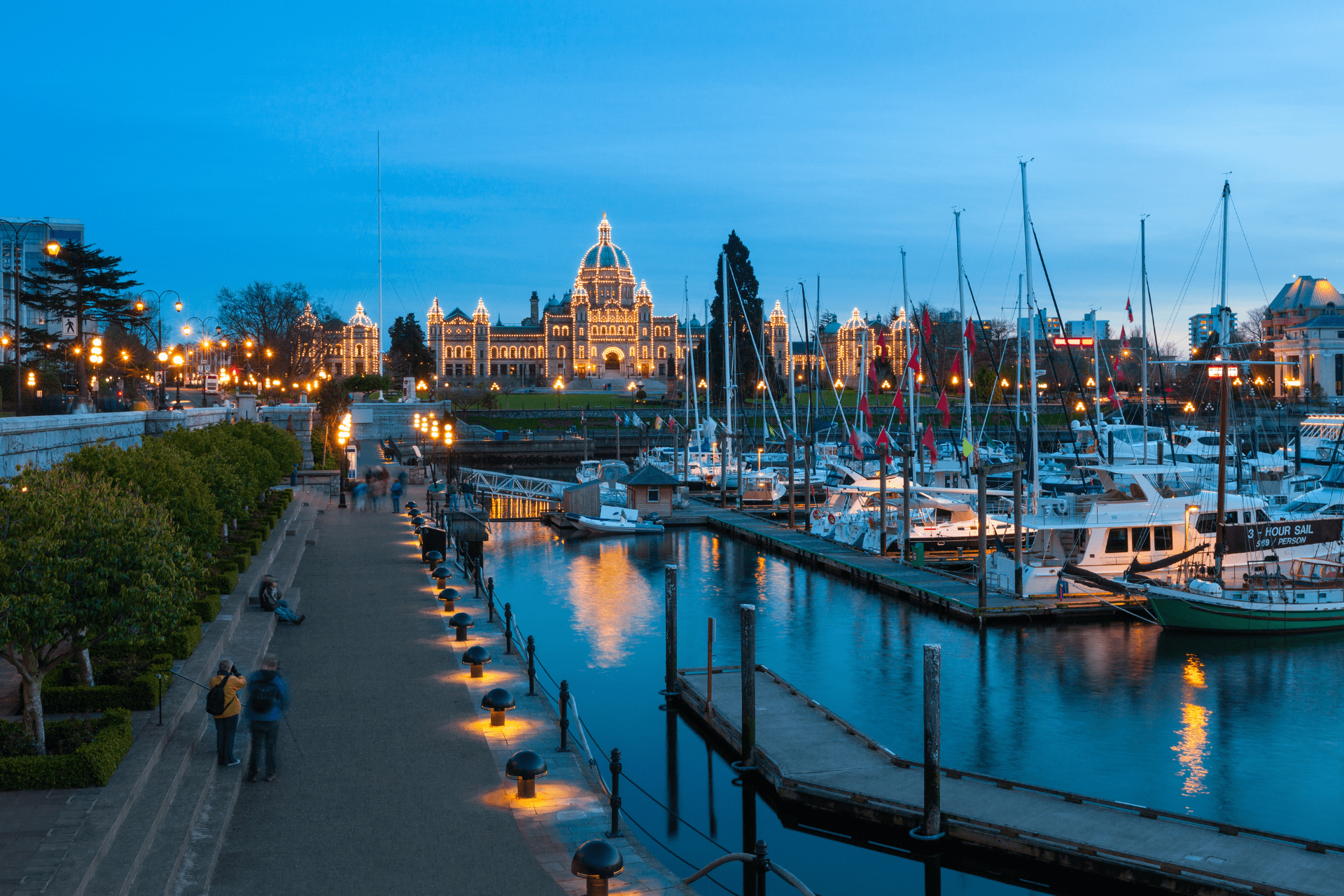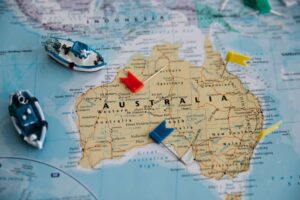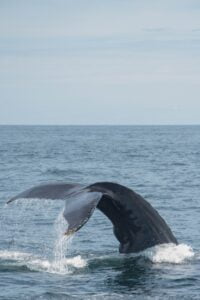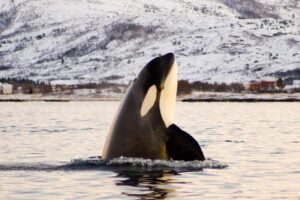Whale Watching Canada: Prime Locations and Seasons
Whale watching in Canada offers you a chance to encounter some of the most majestic creatures on Earth in their natural habitat. With the country’s extensive coastline spread along the Atlantic, Pacific, and Arctic Oceans, you can witness a broad range of whale species. From the playful humpbacks to the iconic orcas, Canada’s waters are a prime destination for individuals looking to experience the thrill of seeing these marine giants up close.
As you plan your whale-watching adventure, it’s important to consider the best times and places for sightings. Summer months tend to offer peak viewing opportunities, allowing you to observe various behaviors, including breaching, feeding, and socializing. The different regions of Canada, from the lush coasts of British Columbia to the chilly waters of Newfoundland and the picturesque bays of Quebec, each provide unique settings for whale watching. Whether from the land or aboard a guided tour, these encounters promise to leave you with a sense of wonder and appreciation for the ocean’s most fascinating inhabitants.
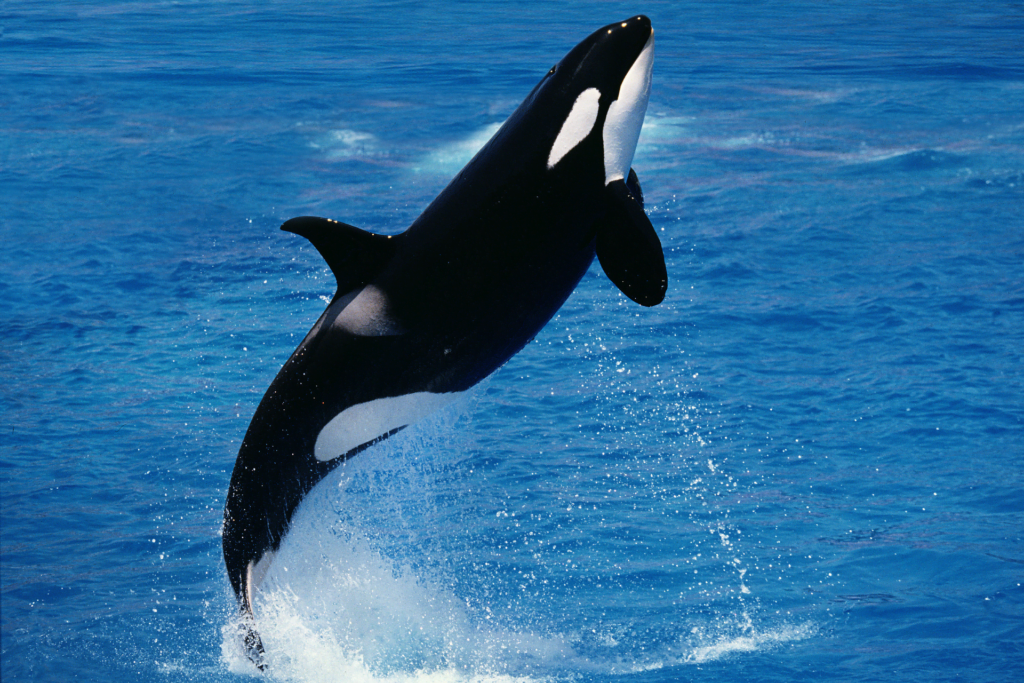

Best Locations For Whale Watching In Canada
Discover the thrill of coming face-to-face with majestic whales in their natural habitat. Across Canada, specific locales boast remarkable opportunities for this experience, from the Pacific to the Atlantic.
British Columbia Hotspots
Vancouver Island emerges as a premier destination for whale watching in British Columbia. Your adventure may take you through the Salish Sea, where the diverse marine life includes orcas, humpback whales, and grey whales. Tours typically depart from Victoria, Tofino, or Telegraph Cove, promising a rich tapestry of marine biodiversity.
Quebec’s Marine Sanctuaries
Venture to the St. Lawrence River and the St. Lawrence Estuary for a spectacular belugas and blue whales display. The renowned Tadoussac area, in particular, is celebrated for its accessible whale-watching tours. Here, you can witness these magnificent creatures as they navigate the confluence of fresh and saltwater, providing a unique ecosystem for marine life.
Atlantic Encounters In Nova Scotia
In the Atlantic region, the waters of Nova Scotia are brimming with whale watching potential. The Bay of Fundy is famous for its high tides and an abundance of marine creatures, notably the humpback and minke whales. The best times for sighting these ocean giants are during the summer and fall migrations.
Newfoundland And Labrador’s Rich Waters
The coasts of Newfoundland and Labrador offer unparalleled whale watching experiences. In the summer months, you’ll have a chance to see humpback, minke, and sometimes even extremely rare blue whales. For those seeking the experience of a lifetime, the province’s unique location provides excellent whale watching opportunities coupled with breathtaking icebergs.
Types Of Whales You Can Encounter
Canada’s vast coastline offers you the chance to see some of the world’s most awe-inspiring marine giants. From the acrobatic displays of humpback whales to the social orca pods, your whale-watching experience can be as diverse as the Canadian waters.
Majestic Humpbacks And Their Acrobatics
The humpback whale, known for its spectacular breaching and tail slapping, is a common sight on Canada’s coasts. These whales are not just a thrill to watch but their songs, which travel for miles underwater, can also be a hauntingly beautiful experience during your excursion.
The Mighty Orca Pods
Encountering orca pods is a breathtaking experience. Also named killer whales, these intelligent predators are known for their distinctive black-and-white coloring and complex social structures. Watching them hunt in unison or communicate with each other will highlight any wildlife tour.
Graceful Belugas In Northern Waters
You’ll find beluga whales in colder waters, especially in places like the Churchill River in Manitoba. Their white color and endearing expressions make them a favorite among whale watchers. Belugas are known for their curiosity, often approaching boats, giving you a chance for an up-close encounter.
Elusive Minke Whales
Minke whales, though smaller than some of their baleen whale relatives, are still a wonderful sight to behold. While they can be more elusive, the thrill of spotting one as it briefly surfaces can make your trip even more memorable. Keep your eyes peeled; their swift, sleek movements can surprise you.
The Best Time To Go Whale Watching
When planning your whale watching adventure in Canada, timing is essential to maximize your chances of encountering these majestic marine mammals. Seasonal migration patterns dictate the arrival and departure of different whale species.
Seasonal Migration Patterns
Whales move seasonally, following food sources and warmer waters. In general, migratory routes bring baleen and toothed whales into Canadian waters at specific times of the year. For instance, you’re more likely to spot humpback whales as they travel to feeding grounds during spring and autumn.
Summer: A Peak Season For Whale Sightings
Summer is the peak time for whale sightings in Canadian waters. Whales are commonly observed from late May to October, with July and August offering the highest likelihood of sightings. During these months, you can expect longer daylight hours and more tour options, enhancing your whale-watching experience.
Wildlife Beyond Whales
While whale watching in Canada allows you to see the magnificent baleen whales, your adventure doesn’t stop there. The country’s coasts are also a habitat for a diverse range of other marine wildlife and birds that are equally fascinating and worth watching.
Spotting Seals And Seabirds
You might find various species of seals lounging on rocky shores or swimming alongside your boat. With their round eyes and spotted coats, harbor seals are often seen sunbathing in groups. In terms of seabirds, the coastline is teeming with life, from gulls to the stoic bald eagles perched atop trees, scouting for their next meal.
Dolphins And Porpoises: The Whales’ Cousins
As you scan the waters for whales, watch for their smaller but equally delightful relatives, the dolphins and porpoises. The acrobatic Pacific white-sided dolphins might grace you with an energetic display, while the elusive harbor porpoise may briefly appear before shyly disappearing beneath the waves.
Nesting Puffins And Majestic Birds Of Prey
You might spot the colorful puffins among the rocky cliffs with their distinctive beaks during the nesting season. These birds are often seen diving into the water in search of herring or capelin. Moreover, if you’re lucky, you might also witness majestic birds of prey, like the peregrine falcon, soaring high above, adding to the already thrilling wildlife experience.
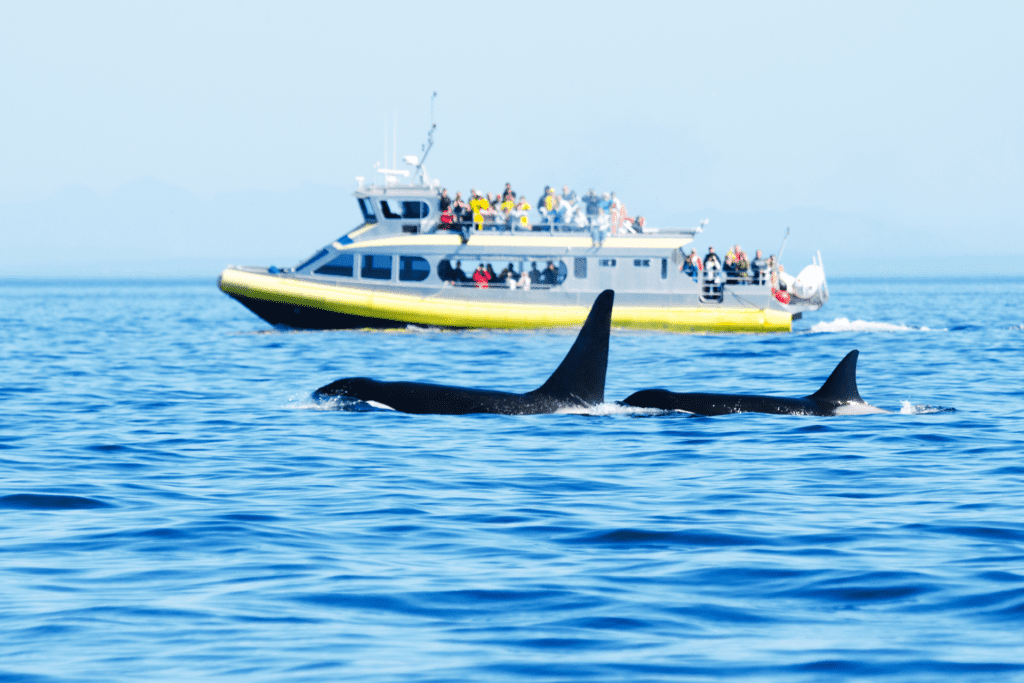

Whale Watching Tours And Ethics
When you’re looking forward to a whale watching adventure in Canada, selecting a responsible tour company and understanding the role of professional guides are crucial to ensure an ethical experience with these majestic marine creatures.
Choosing The Right Tour Company
Considerations for Sustainability:
Choose a tour company committed to the protection of whales and their habitat. Verify if they follow responsible wildlife viewing guidelines and participate in conservation efforts. Research if the company has any certifications or memberships with recognized environmental organizations.
Check for Regulations Compliance:
Tour companies should always comply with government regulations regarding distance from whales and operational conduct. For instance, in British Columbia, there are regulatory distances that boats must maintain from certain whale species like maintaining a minimum distance of 200 meters from killer whales (orcas).
Read Customer Reviews:
Seek out reviews and testimonials to gain insights into the company’s reputation on ethical standards. High praise for respectful wildlife interactions can be a good indicator of the company’s commitment to ethical tourism.
The Role Of Professional Guides
Conveying Regulated Practices:
Your guides should inform you about the regulated practices aimed at minimizing the impact on the whales. They should explain why it’s important to avoid disturbing the whales and how maintaining a safe distance contributes to their well-being.
Educational Component:
Look for guides who provide valuable educational content about whale behaviors, conservation efforts, and the ecosystem. A knowledgeable guide can transform your whale watching experience into an enlightening trip, raising awareness about marine life conservation.
Marine Conservation Efforts In Canada
In Canada, your participation in whale watching comes with a commitment to the conservation and protection of marine wildlife. Understanding the regulations and research efforts is crucial for maintaining the delicate balance in marine ecosystems.
Protecting The Giants Of The Sea
When you set out to observe these magnificent creatures, you’re subject to strict guidelines designed to protect marine mammals. For example, it’s mandatory to maintain a minimum approach distance of 100 metres from most whales, dolphins, and porpoises. These regulations are enforced to ensure that you can witness these animals without causing them stress or harm. Here’s what you need to know about responsible whale watching:
- Keep a respectful distance from marine wildlife.
- Avoid sudden changes in speed or direction when near these animals.
- Do not attempt to feed or touch marine mammals.
Research And Preservation Initiatives
Your awareness of marine conservation is bolstered by various research and preservation initiatives throughout Canada. These initiatives focus on understanding the factors threatening marine life and developing strategies to mitigate these risks. From the impact of ocean noise on whale communication to the pressing need to protect critical feeding grounds, these studies inform conservation policies and help ensure the longevity of marine species. Participating in whale watching with operators who support and educate about conservation can enhance your experience and contribute to these efforts. Here is what’s being done:
- Research: Cutting-edge technology is utilized to monitor and understand the marine environment and the species within it.
- Habitat Protection: Efforts to safeguard key areas, like the foraging grounds of the Southern Resident Killer Whale, are significant for the survival of endangered species.
- Noise Reduction: Advancements in shipping technology are now available, which enable quieter marine traffic to lessen the acoustic disturbance to marine life.
Remember, your mindful participation in whale-watching activities plays a role in the conservation of these spectacular marine inhabitants.
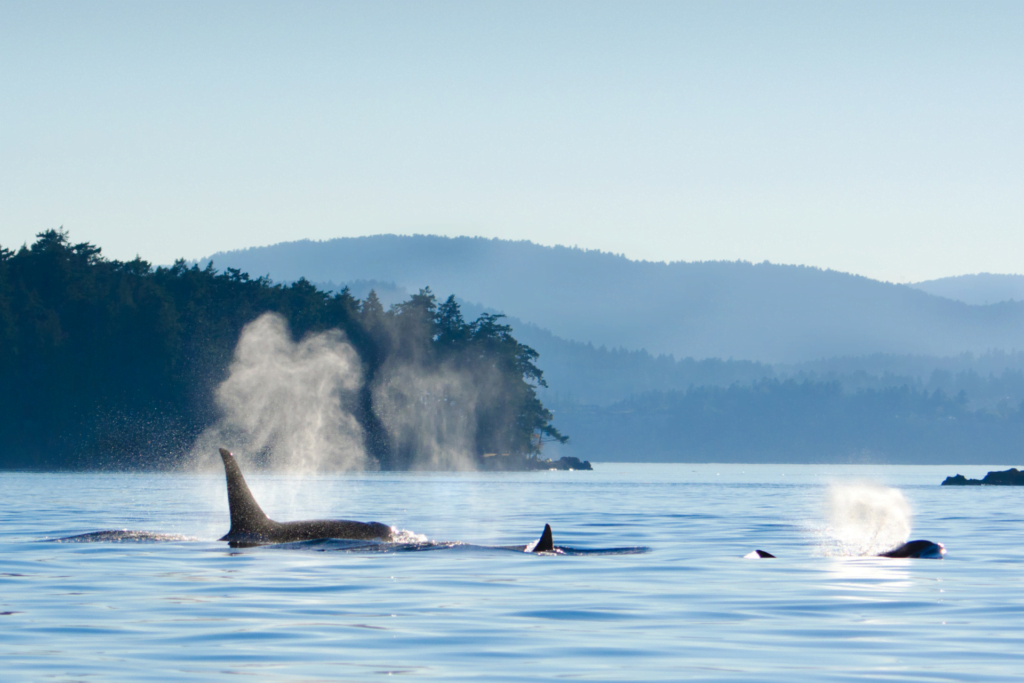

Photography And Whale Watching
Embarking on a whale watching adventure presents a unique opportunity to capture some of nature’s most majestic creatures. Striking the balance between respect for wildlife and the pursuit of that perfect shot requires preparation and understanding.
Best Practices For Capturing The Moment
Before clicking the shutter, familiarize yourself with the behavior of whales in their natural environment. Patience is key; sightings can be fleeting, and the action is often fast-paced when it occurs. Here are a few pointers:
- Observe Quietly: Maintain a low profile and minimize noise to avoid disturbing the whales.
- Respect Distances: Keep a respectful distance, as getting too close can stress the animals and is often illegal.
- Plan Your Shots: Anticipate where the whales will surface and focus your camera beforehand.
The Equipment You’ll Need
To make sure you’re well-equipped for whale photography, there are essential pieces of gear that should be part of your kit:
- Camera: A DSLR or mirrorless camera with a fast autofocus system is ideal for catching quick movements.
- Lenses: A range of lenses could be useful, with a telephoto lens (200mm or greater) being essential for distance shots. You might also consider a wide-angle lens for scenery or breaches.
- Protection: Ensure your gear is protected from saltwater spray with covers or housings.
Unique Whale Watching Experiences
Canada’s vast coastline offers some of the most distinctive whale watching experiences in the world. From kayak adventures to the gentle hum of whales amidst icebergs, each adventure is a chapter waiting for you to explore.
Kayaking Amongst Whales
Kayaking gives you an intimate encounter with majestic whales in their natural habitat. Glide silently over the waters of the Saguenay River, where the mingling of freshwater and saltwater creates a rich feeding ground for various whale species. Your kayak cuts through the water, allowing you to be just a paddle’s length away from these gentle giants.
Iceberg Views And Whale Sounds
There’s a magical place where you can observe whales as they navigate an ancient, icy landscape. Near Churchill, you have the unique chance to hear the songs of belugas reverberating off towering icebergs. The stark contrast of the white ice against the deep blue sea is an unforgettable sight and sound symphony.
Sunset Cruises And The Magic Of Twilight
As the sun dips below the horizon, embark on a sunset cruise where the ocean takes on hues of oranges and purples. Watch as whales breach in the fading light, an enchanting display that combines the serene with the spectacular. This twilight experience is not just a sighting; it’s a moment that will capture your heart.
Preparing For Your Whale-Watching Adventure
Embarking on a whale-watching journey in Canada is an exhilarating experience. Proper preparation is crucial for comfort and safety to enhance your adventure.
What To Bring
- Layered Clothing: The climate can change rapidly on the water, so wear layers to adjust accordingly. A waterproof windbreaker is essential to stay dry.
- Sun Protection: Even on overcast days, UV rays can be strong. Bring sunscreen, a hat, and sunglasses.
- Pack a pair of Binoculars To get the best view of whales at a distance.
- Camera: Have a camera ready with a neck strap to capture the moment without dropping it overboard.
- Snacks and Water: Stay hydrated and keep your energy up with light snacks and plenty of water.
- Seasickness Medication: If you’re prone to motion sickness, consider taking anti-nausea medication before departure.
Safety Considerations
- Listen to the Crew: Your whale-watching tour crew are trained professionals. For your safety, follow their instructions at all times.
- Life Jackets: Familiarize yourself with the life jacket location and instructions for use.
- Boat Safety: Move around the boat carefully, holding onto railings, especially when viewing whales or in rough water.
- Respect Wildlife: Enjoy viewing the whales, but do so at a safe distance. Rushing to see them or making loud noises can stress the animals.
Frequently Asked Questions
For those eager to embark on a whale watching adventure in Canada, this FAQ section provides concise answers to commonly asked questions to enhance your experience.
What is the peak season for whale watching in various Canadian provinces?
The best time to see whales in Canada generally spans from May to October. Specific timings can vary by province due to differing climates and whale migrations.
Which locations are renowned for the best whale watching experiences in Canada?
British Columbia and Newfoundland are celebrated for their whale watching opportunities. Coastal areas provide an array of experiences from boats or shore.
What types of whale species can be observed during whale watching tours in Newfoundland?
Newfoundland tours often reveal humpback whales, minke whales, and even the majestic blue whale, among others readily spotted in these nutrient-rich waters.
In which areas of Canada can you commonly see orcas?
Orcas are frequently observed in the Pacific waters, particularly around the Vancouver Island area in British Columbia where their presence is a highlight for many tours.
What are the top-rated whale watching tours available in Nova Scotia?
Nova Scotia is known for its high-quality tours, featuring sightings of fin whales, minke whales, and pilot whales with tours often departing from areas like the Bay of Fundy.
Are there any whale-watching opportunities in the vicinity of Toronto or Ontario?
While Ontario isn’t a traditional hotspot for whale watching, you may spot belugas in the remote waters of the Churchill River near Hudson Bay or head to Quebec’s maritime regions for various whale encounters.

